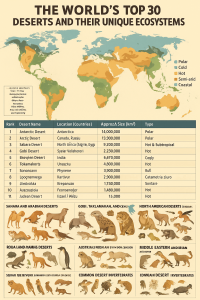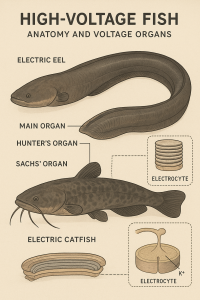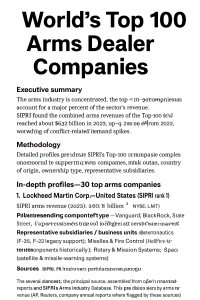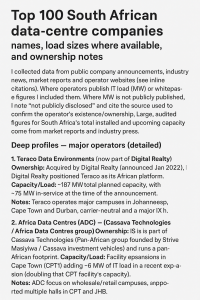Introduction
The steel giants that traverse our oceans carry the lifeblood of global commerce. International cargo ships transport approximately 90% of the world’s traded goods, moving everything from raw materials and manufactured products to food and energy resources across vast oceanic distances. Over the past century, the maritime shipping industry has undergone revolutionary transformations, evolving from coal-powered steamships to sophisticated, computer-controlled mega-vessels capable of carrying thousands of containers across continents.
The story of international cargo shipping is intimately tied to the rise and fall of empires, the mechanics of global trade, technological innovation, and the economic ambitions of nations. Today, five countries stand as titans in this industry, commanding the world’s merchant fleets and shaping the flow of international commerce.
The Evolution of Cargo Ships: 1925-2025
The Interwar Period (1925-1939)
The mid-1920s represented a transitional era in maritime shipping. The world was still recovering from World War I, which had decimated merchant fleets across Europe. Steam-powered cargo ships dominated the seas, with coal gradually giving way to oil-fired boilers. Ships of this era typically ranged from 5,000 to 10,000 gross tons, with modest cargo capacities by modern standards.
British shipping lines commanded the largest share of global tonnage, followed by the United States, which had massively expanded its merchant fleet during the war years through the Emergency Fleet Corporation. The interwar period saw the introduction of diesel engines on cargo vessels, offering greater fuel efficiency and range. The motor ship revolution began transforming long-distance trade routes.
Liberty ships and their predecessors established standardized designs that could be mass-produced, a concept that would prove crucial in the coming decades. Maritime nations competed not just on vessel numbers but on speed, with faster ships commanding premium freight rates on lucrative routes like the North Atlantic run.
World War II and Its Aftermath (1939-1960)
World War II transformed global shipping in profound ways. The conflict destroyed thousands of merchant vessels, with German U-boats alone sinking over 3,000 Allied ships. However, the war also sparked unprecedented shipbuilding efforts. The United States produced over 2,700 Liberty ships between 1941 and 1945, using revolutionary mass-production techniques that reduced construction time from months to mere weeks.
The post-war period saw a dramatic redistribution of maritime power. European fleets lay in ruins, creating opportunities for American dominance. However, European nations, particularly those with strong maritime traditions like Greece and Norway, quickly rebuilt their merchant marines. The Marshall Plan facilitated European reconstruction, including the modernization of ports and shipping infrastructure.
The 1950s introduced several innovations that would reshape cargo shipping forever. The most significant was containerization, pioneered by American trucking entrepreneur Malcolm McLean in 1956. His converted tanker, the Ideal X, carried 58 shipping containers from Newark to Houston, demonstrating a concept that would revolutionize global trade. Standardized containers dramatically reduced loading times, minimized cargo damage, and enabled seamless transfer between ships, trains, and trucks.
The Container Revolution (1960-1980)
The 1960s and 1970s witnessed the explosive growth of containerization. The International Organization for Standardization established standard container sizes in 1968, creating the 20-foot and 40-foot containers (TEUs – Twenty-foot Equivalent Units) that remain industry standards today. Ports worldwide invested billions in specialized container-handling equipment, cranes, and storage facilities.
This period also saw the emergence of specialized vessel types. Beyond general cargo ships, the industry developed dedicated container ships, bulk carriers for commodities like grain and coal, tankers for petroleum products, and specialized vessels for automobiles and refrigerated goods. Each vessel type was optimized for its specific cargo, maximizing efficiency and profitability.
Japan emerged as a maritime powerhouse during this era, leveraging its post-war industrial miracle to become a leading shipbuilding nation and a major flag state. Japanese shipyards pioneered new construction techniques and vessel designs, producing increasingly larger and more efficient ships. Greek shipowners, many operating under flags of convenience, controlled vast fleets of tankers and bulk carriers.
The oil crises of 1973 and 1979 profoundly impacted shipping economics. Fuel efficiency became paramount, driving innovations in hull design, engine technology, and operational practices. The era also saw the rise of “flags of convenience” – ship registries in nations like Panama and Liberia that offered favorable tax treatment and relaxed regulations, allowing shipowners to reduce operating costs significantly.
The Age of Mega-Ships (1980-2000)
The final two decades of the 20th century saw dramatic increases in vessel size and capacity. Container ships that carried 3,000 TEUs were considered large in 1980; by 2000, vessels capable of carrying 8,000 TEUs were entering service. Economies of scale drove this growth – larger ships could transport more cargo with proportionally lower crew and fuel costs per container.
Technological advances transformed ship operations. Computerized navigation systems, satellite communications, and automated engine controls made vessels more efficient and safer. GPS revolutionized maritime navigation, while sophisticated weather routing software allowed ships to optimize routes for fuel efficiency and schedule reliability.
China’s economic opening under Deng Xiaoping and its subsequent manufacturing boom created unprecedented demand for maritime shipping. Chinese ports began their transformation from regional facilities to global mega-ports. The country’s accession to the World Trade Organization in 2001 would accelerate this trend dramatically.
The period also witnessed increased environmental awareness. International regulations began addressing ship-source pollution, with conventions governing oil discharge, sewage, and garbage disposal. The 1997 Kyoto Protocol, though not immediately targeting shipping, signaled growing global concern about greenhouse gas emissions that would eventually impact the industry.
The 21st Century Transformation (2000-2025)
The new millennium brought unprecedented changes to international shipping. The most visible has been the relentless increase in vessel size. The Emma Maersk, delivered in 2006 with a capacity of 11,000 TEUs, was considered impossibly large; by 2025, ultra-large container vessels (ULCVs) exceed 24,000 TEU capacity. These floating cities, stretching 400 meters long and stacked with containers 60 meters high, represent the ultimate expression of maritime economies of scale.
The 2008 global financial crisis devastated shipping markets, causing freight rates to collapse and forcing massive overcapacity corrections. Many shipping lines consolidated or went bankrupt. The crisis demonstrated the industry’s extreme cyclicality and vulnerability to global economic shocks. Recovery was slow and uneven, with profitability remaining challenging throughout the 2010s.
The COVID-19 pandemic created unprecedented disruption in 2020-2021. Port closures, crew change restrictions, and wildly fluctuating demand caused massive congestion at major ports, with dozens of ships anchored offshore waiting for berths. Container shortages in some regions led to skyrocketing freight rates, with some routes seeing increases of 500-700%. The crisis exposed the fragility of just-in-time supply chains and sparked discussions about reshoring manufacturing.
Environmental regulations have intensified dramatically. The International Maritime Organization’s 2020 sulfur cap reduced allowable sulfur content in marine fuel from 3.5% to 0.5%, forcing shipowners to invest in scrubbers or switch to cleaner, more expensive fuels. The IMO has set ambitious targets to reduce greenhouse gas emissions by at least 50% by 2050 compared to 2008 levels, with pressures mounting for even more aggressive goals.
Technological innovation accelerates. Automation and digitalization are transforming ship operations, with autonomous vessels undergoing trials. Blockchain technology promises to revolutionize shipping documentation and supply chain transparency. Alternative propulsion systems, including liquefied natural gas (LNG), hydrogen fuel cells, and ammonia engines, are being developed to meet decarbonization targets.
The Top 5 Countries Dominating Global Shipping
1. Greece – The Eternal Maritime Nation
Greece commands the world’s largest merchant fleet by capacity, a position it has held for decades despite its relatively small population of 10 million. Greek shipowners control approximately 20% of global deadweight tonnage and over half of the European Union’s fleet capacity. This dominance traces back millennia to ancient maritime trading traditions, but modern Greek shipping power emerged in the post-World War II period.
Following the devastation of their fleet during WWII, Greek shipowners like Aristotle Onassis and Stavros Niarchos rebuilt aggressively, often purchasing war-surplus Liberty ships at bargain prices. They pioneered the use of flags of convenience, registering vessels in Panama and Liberia to minimize costs while maintaining beneficial ownership. This business model proved extraordinarily successful, allowing Greek owners to compete globally while avoiding Greece’s relatively high operating costs.
Greek shipping families typically maintain private, family-controlled companies spanning multiple generations. This structure allows long-term strategic planning and the ability to weather market downturns that might bankrupt publicly-traded competitors. Major families like the Angelicoussis, Marinakis, and Prokopiou groups control fleets worth billions of dollars.
The Greek fleet composition heavily favors bulk carriers and tankers rather than container ships, reflecting the owners’ focus on commodity trades where operational expertise and market timing generate profits. Greek owners are renowned for their market acumen, expertly timing ship purchases and sales to maximize returns through boom-and-bust cycles.
Athens and Piraeus serve as the nerve center of Greek shipping, hosting hundreds of shipping companies, maritime lawyers, insurers, classification societies, and service providers. The Piraeus Marine Club remains one of global shipping’s most influential networking venues. The Greek government supports the industry through favorable tax treatment, recognizing shipping’s crucial contribution to the national economy through foreign exchange earnings and high-value employment.
2. China – The Rising Maritime Superpower
China’s ascent to maritime dominance represents one of the most dramatic shifts in modern economic history. From a relatively minor maritime nation in 1980, China now operates the world’s second-largest fleet by tonnage and dominates global shipbuilding, constructing over 40% of the world’s new vessels by gross tonnage.
China’s maritime rise parallels its economic transformation. As the “factory of the world,” China generates massive demand for imported raw materials and exported manufactured goods. This trade volume necessitated a large, modern merchant fleet. State-owned enterprises like COSCO Shipping (formed through the 2016 merger of COSCO and China Shipping) rank among the world’s largest container lines, while numerous Chinese companies operate bulk carriers, tankers, and specialized vessels.
Chinese shipyards in cities like Shanghai, Dalian, and Guangzhou produce vessels of all types and sizes, from small feeder container ships to ultra-large crude carriers (ULCCs) and liquefied natural gas (LNG) carriers. Government support through favorable financing, subsidies, and strategic planning has enabled Chinese yards to compete effectively on price while steadily improving quality and technological sophistication.
China’s Belt and Road Initiative, launched in 2013, includes a significant maritime component often called the “Maritime Silk Road.” Through this strategy, Chinese companies invest in ports worldwide, from Piraeus in Greece to Gwadar in Pakistan, creating a network of Chinese-influenced maritime infrastructure. This extends China’s strategic reach and ensures favorable access for Chinese ships and cargo.
The Chinese government views maritime power as essential to national security and economic prosperity. The country’s merchant fleet serves dual civilian and potential military purposes, a capability highlighted by China’s military-civil fusion strategy. Chinese-flagged vessels can transport military equipment and supplies if needed, while the country’s massive shipbuilding capacity could theoretically be redirected toward naval construction in a crisis.
China’s maritime ambitions face challenges, including increasing labor costs that reduce competitiveness, environmental regulations requiring cleaner operations, and geopolitical tensions that complicate access to certain markets and shipping routes. Nevertheless, China’s combination of shipbuilding prowess, large merchant fleet, extensive port network, and strategic focus virtually ensures continued maritime prominence.
3. Japan – The Technology Leader
Japan represents a different model of maritime power, combining sophisticated shipbuilding technology with major shipping lines and financial strength. Although Japanese shipyards now build fewer ships than Chinese competitors, they dominate high-value, technologically complex vessel segments like LNG carriers, specialized chemical tankers, and innovative eco-ship designs.
Japanese shipping has deep historical roots, with companies like Nippon Yusen Kaisha (NYK), Mitsui O.S.K. Lines (MOL), and Kawasaki Kisen Kaisha (“K” Line) tracing their origins to the late 19th century. These integrated shipping groups combine vessel operations with logistics services, shipbuilding interests, and trading arms, creating vertically integrated maritime conglomerates.
Japan’s post-WWII maritime resurrection mirrored its broader economic miracle. Protected by government industrial policy and supported by favorable financing from banks and trading companies (sogo shosha), Japanese yards dominated global shipbuilding by the 1960s and 1970s. They pioneered automated construction techniques, quality control processes, and innovative designs that set global standards.
The 1980s and 1990s brought challenges as South Korean yards, supported by their own government’s industrial policy, captured market share through aggressive pricing and quality improvements. Japanese yards responded by moving upmarket, focusing on complex, high-margin vessels requiring advanced engineering. Today, Japanese expertise in LNG carriers is unmatched, with companies like Mitsubishi Heavy Industries and Kawasaki Heavy Industries producing the majority of the world’s most sophisticated LNG vessels.
Japanese shipping lines have adapted to the 21st-century environment through strategic alliances and container line mergers. In 2018, the three major Japanese lines consolidated their container operations into Ocean Network Express (ONE), creating a global container carrier capable of competing with larger rivals. This reflects industry trends toward consolidation and alliance membership to achieve necessary scale.
Japanese maritime culture emphasizes long-term relationships, technical excellence, and reliability. Japanese-operated vessels maintain reputations for superior maintenance and operational standards. The country’s classification society, ClassNK (Nippon Kaiji Kyokai), is one of the world’s most respected, certifying vessels for safety and regulatory compliance globally.
Environmental leadership increasingly defines Japanese maritime strategy. Japanese companies pioneer eco-ship designs incorporating wind-assisted propulsion, air lubrication systems to reduce hull friction, and alternative fuels. The world’s first liquefied hydrogen carrier was built in Japan, demonstrating the country’s commitment to next-generation maritime technologies.
4. Germany – The Operational Expertise
Germany occupies a unique position in global shipping, commanding one of the world’s largest fleets by tonnage despite lacking the shipbuilding capacity of Asian competitors or the traditional maritime culture of Greece. German maritime power centers on container shipping operations, with Hamburg standing as one of Europe’s busiest ports and the headquarters of major shipping lines.
The Hamburg-based Hapag-Lloyd, formed through the 2005 merger of Hapag (Hamburg-Amerikanische Packetfahrt-Actien-Gesellschaft, founded 1847) and North German Lloyd, ranks among the world’s largest container carriers. German shipowners operate across all sectors, including substantial fleets of container ships, bulk carriers, and specialized vessels. The German fleet’s distinguishing characteristic is its modern, well-maintained composition and operational efficiency.
German maritime success derives from sophisticated financial structuring and management expertise. The German KG (Kommanditgesellschaft) ship financing model allows private investors to participate in vessel ownership through limited partnerships, benefiting from tax advantages while shipping companies access capital. Though this model faced challenges during the 2008 financial crisis, when many KG funds collapsed, it demonstrates German innovation in maritime finance.
German shipping emphasizes technological sophistication and environmental performance. German-operated vessels typically incorporate the latest fuel-efficiency technologies, emission reduction systems, and digital management platforms. This reflects broader German industrial culture valuing engineering excellence and long-term quality over short-term cost minimization.
Hamburg serves as a complete maritime cluster, hosting shipping companies, maritime lawyers, insurance brokers, ship suppliers, classification societies, and maritime technology firms. The Hamburg School of Business Administration offers respected maritime economics programs, while the city’s maritime arbitration capabilities make it a favored venue for dispute resolution.
German maritime policy increasingly focuses on decarbonization and digitalization. German technology companies develop autonomous ship systems, shore-power solutions for ports, and alternative propulsion technologies. The country’s position within the European Union makes it influential in shaping maritime regulations and environmental standards affecting global shipping.
The challenge facing German shipping is cost competitiveness. High labor costs, strict environmental regulations, and substantial taxation make German-flagged vessels expensive to operate. Many German owners register ships under foreign flags while maintaining beneficial ownership and management control from Germany, allowing them to combine German expertise with more favorable operating costs.
5. Singapore – The Strategic Maritime Hub
Singapore’s maritime dominance differs from other major shipping nations. Rather than controlling a massive flag registry or shipbuilding industry, Singapore has established itself as the world’s premier maritime services hub, shipping financial center, and arguably the world’s most important port by cargo tonnage.
The Port of Singapore consistently ranks as the world’s busiest by transshipment volume, serving as a crucial node where cargo transfers between vessels connecting East and West. Its strategic location at the Malacca Strait, one of the world’s most critical maritime chokepoints, gives Singapore geographical advantages reinforced by decades of infrastructure investment and policy support.
Singapore’s government has systematically built maritime capabilities since independence in 1965. Lee Kuan Yew recognized that Singapore’s survival as a tiny nation without natural resources depended on becoming indispensable to global trade. Massive investments created world-class port facilities, while favorable policies attracted shipping companies, ship management firms, commodity traders, maritime insurers, and shipping banks to establish regional headquarters in Singapore.
Today, over 5,000 maritime companies operate in Singapore, including most major shipping lines, ship management companies, maritime lawyers, insurance brokers, and classification societies. The Maritime and Port Authority of Singapore (MPA) serves as both regulator and industry promoter, working to maintain Singapore’s competitive advantages.
Singapore’s ship registry has grown substantially, now ranking among the top ten globally. The Singapore flag offers international credibility, reasonable costs, and a sophisticated regulatory environment that inspires confidence among charterers and cargo interests. Singapore-flagged vessels can access global insurance markets and financing on favorable terms.
The maritime sector contributes approximately 7% of Singapore’s GDP, employing over 170,000 people in high-value roles. Beyond traditional shipping, Singapore has become a global maritime technology and innovation center, attracting startups developing autonomous vessels, blockchain supply chain solutions, and maritime artificial intelligence applications.
Singapore Maritime Week, held annually, attracts thousands of maritime professionals for conferences, exhibitions, and networking, reinforcing Singapore’s position as a global maritime capital. The country’s commitment to maritime arbitration and dispute resolution makes it a preferred neutral venue for settling international shipping disputes.
Challenges include competition from other Asian ports seeking to replicate Singapore’s success, technological disruption that might reduce the importance of traditional maritime services, and environmental pressures requiring expensive adaptations. Nevertheless, Singapore’s combination of strategic location, sophisticated infrastructure, skilled workforce, pro-business environment, and governmental commitment position it to remain a maritime superpower for decades to come.
The Global Shipping Landscape Today
The contemporary international shipping industry handles over 11 billion tons of cargo annually, valued in the trillions of dollars. The world merchant fleet comprises approximately 100,000 commercial vessels over 100 gross tons, with total capacity exceeding 2 billion deadweight tons.
Container shipping dominates high-value manufactured trade, with approximately 800 million TEU moved annually. The industry has consolidated dramatically, with the top ten container lines controlling over 85% of capacity. Strategic alliances like 2M (Maersk and MSC), Ocean Alliance, and THE Alliance coordinate vessel deployments and port calls, generating economies of scale while raising concerns about competition and pricing power.
Bulk shipping remains crucial for global commodity trades. Dry bulk carriers transport iron ore, coal, grain, and other raw materials, with major trade routes connecting resource exporters like Australia and Brazil with manufacturing centers in Asia. The Baltic Exchange Dry Index tracks bulk shipping rates, serving as a leading economic indicator reflecting global industrial activity and trade flows.
Tanker shipping faces uncertain futures as the world transitions away from fossil fuels. Currently, crude oil tankers, product tankers, and LNG carriers move vast quantities of energy products globally. However, decarbonization pressures and renewable energy growth may significantly reduce long-term demand for petroleum tankers, forcing the segment to adapt.
Specialized shipping segments serve niche markets with customized vessels. Roll-on/roll-off (RoRo) ships and pure car carriers (PCCs) transport automobiles globally, connecting manufacturing plants with consumer markets. Refrigerated cargo ships (reefers) and specialized container units move perishable goods like fruit, meat, and pharmaceuticals under controlled temperatures. Heavy-lift vessels transport oversized cargo like power plant components and offshore oil platforms.
Challenges and Future Prospects
The maritime shipping industry faces unprecedented challenges requiring fundamental transformations:
Decarbonization: The IMO’s emission reduction targets require revolutionary changes in ship propulsion and fuels. No clear technological winner has emerged, with industry actors pursuing multiple pathways including LNG, methanol, ammonia, hydrogen, and battery-electric propulsion. The transition will require hundreds of billions in investment while ships typically operate for 20-25 years, creating difficult timing and obsolescence risks.
Digitalization: The traditionally conservative shipping industry must embrace digital technologies to remain competitive. Blockchain promises to eliminate paper-based documentation and streamline customs clearance. Internet of Things sensors enable predictive maintenance and real-time cargo monitoring. Artificial intelligence optimizes routing, fuel consumption, and port operations. However, implementation requires industry-wide standards and substantial investment.
Cybersecurity: Increasing digitalization and automation create new vulnerabilities. Cyberattacks on shipping companies, ports, and vessel control systems pose real threats to maritime operations. The industry must develop robust cybersecurity capabilities while maintaining operational efficiency.
Labor: Manning ships with qualified officers and crew grows increasingly difficult as maritime careers lose appeal in developed nations. Training standards must keep pace with technological changes while ensuring adequate competency. Crew welfare issues, highlighted by pandemic-related crew change difficulties, require industry attention.
Geopolitical tensions: Rising nationalism, trade conflicts, and security concerns threaten the relatively open international shipping regime that has prevailed since World War II. Protectionist policies, sanctions, and security restrictions could fragment global shipping networks, reducing efficiency and increasing costs.
Port congestion: The pandemic exposed structural vulnerabilities in port operations and inland logistics. Investments in port automation, inland transportation infrastructure, and supply chain visibility are needed to prevent recurring bottlenecks.
Overcapacity: The industry’s cyclical nature and long lead times for ship construction periodically create overcapacity that depresses freight rates and threatens profitability. Better demand forecasting and more disciplined ordering behavior could moderate boom-bust cycles.
Despite these challenges, international shipping remains indispensable to the global economy. World trade continues growing, emerging markets industrialize, and global supply chains grow more complex. The fundamental economics of waterborne transportation – its unmatched efficiency for moving large quantities across long distances – ensure shipping’s continued centrality to international commerce.
The next century of maritime shipping will likely see continued technological evolution, shifting power balances among maritime nations, and adaptation to environmental imperatives. The five dominant nations discussed here – Greece, China, Japan, Germany, and Singapore – seem well-positioned to maintain influence, though new competitors may emerge. The history of maritime shipping demonstrates that adaptability, innovation, and strategic vision separate long-term winners from those left behind by relentless change.
Conclusion
The past century has witnessed the transformation of international cargo shipping from coal-fired steamships carrying modest loads to ultra-large computerized vessels that form the circulatory system of the global economy. The five countries examined – Greece with its shipping families’ entrepreneurial expertise, China with its comprehensive maritime-industrial complex, Japan with its technological leadership, Germany with its operational sophistication, and Singapore with its strategic hub model – demonstrate different pathways to maritime power.
Yet all share common elements: long-term strategic commitment, substantial investments in maritime infrastructure and human capital, supportive policy environments, and the ability to adapt to changing circumstances. As the industry navigates the challenges of decarbonization, digitalization, and geopolitical uncertainty, these attributes will determine which nations continue dominating global shipping in the decades ahead.
The steel vessels that crisscross our oceans carry far more than consumer goods and raw materials. They transport the hopes of developing nations seeking prosperity through trade, the ambitions of corporations competing in global markets, and the necessities that sustain modern civilization. Understanding international shipping illuminates the hidden infrastructure enabling our interconnected world, revealing the maritime powers shaping global commerce and the historical forces that brought them to prominence. As humanity faces unprecedented challenges requiring global cooperation, the shipping industry that binds our world together has never been more critical to our collective future.







Be First to Comment